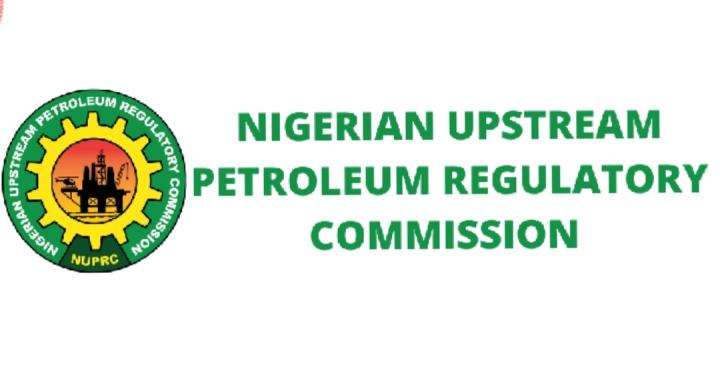The Nigerian Upstream Petroleum Regulatory Commission (NUPRC) has disclosed that the country produced a total of 1.37 trillion cubic feet (TCF) of natural gas between January and June 2025. The figure highlights both the scale of Nigeria’s gas resources and the government’s ongoing push to expand gas development as a cornerstone of national energy strategy.
According to the NUPRC’s latest industry performance report released in Abuja on Wednesday, the volume represents combined output from joint ventures, production sharing contracts, and marginal field operators across the six-month period.

The Commission explained that out of the total gas produced, a significant portion was utilized for domestic consumption, particularly in power generation and industrial use, while the rest was exported through the Nigeria Liquefied Natural Gas (NLNG) plant and other channels.
Chief Executive of the NUPRC, Engr. Gbenga Komolafe, said the figures confirm Nigeria’s capacity to maintain robust gas supply despite challenges in infrastructure and pricing frameworks. He noted that gas remains central to President Bola Tinubu’s administration’s “Decade of Gas” agenda, aimed at harnessing natural gas as a transition fuel and driver of economic growth.
“The report underscores the strategic importance of gas to Nigeria’s energy future. With 1.37 TCF produced in the first half of the year, we are consolidating our efforts to expand domestic utilization while also ensuring that Nigeria maintains a strong presence in the global gas market,” Komolafe stated.
He said the Commission is intensifying collaboration with industry players to expand investment in gas infrastructure, including processing plants, pipelines, and distribution networks. According to him, the priority is to unlock stranded gas reserves and create a reliable supply chain for industries and households.
Out of the total gas produced in H1 2025, NUPRC data showed that about 52 percent was commercialized locally and for export, while the rest was either re-injected for reservoir management or flared. The Commission acknowledged that gas flaring remains a concern but noted that recent regulations, including the Nigerian Gas Flare Commercialisation Programme, are expected to reduce flaring volumes significantly over the coming years.
Analysts say the H1 2025 output, while encouraging, also underscores the need for Nigeria to accelerate investment in gas development to keep pace with growing domestic demand. Power plants, fertilizer companies, and other industries have consistently lamented inadequate and unstable gas supply, which affects their operations.
Industry operators also believe that pricing remains a key obstacle. The current regulated domestic gas price, they argue, does not reflect the true cost of production, making it unattractive for producers to prioritize domestic supply. Calls have therefore grown for a market-driven pricing framework that balances affordability with investment sustainability.
Komolafe, however, stressed that government is aware of these challenges and is working with stakeholders to implement policies that will encourage investment while protecting consumers. He pointed out that the Petroleum Industry Act (PIA) provides a legal framework for addressing many of the bottlenecks in gas development.
The Commission also highlighted that Nigeria’s proven gas reserves currently stand at over 206 trillion cubic feet, among the largest in the world. This, Komolafe said, provides a solid base for Nigeria’s ambition to become a major gas hub in Africa and a global player in liquefied natural gas exports.
He added that several gas projects, both ongoing and planned, are expected to boost production capacity in the medium to long term. These include the expansion of the NLNG Train 7 project, upgrades to gas gathering systems, and new pipeline projects aimed at opening up more access to gas for domestic and export markets.
Industry stakeholders welcomed the report but cautioned that Nigeria must move quickly to address systemic challenges. The President of the Nigerian Gas Association (NGA), Olalekan Ogunleye, said the production figure reflects resilience but also underscores lost opportunities due to infrastructure bottlenecks.
“Producing 1.37 TCF in half a year is positive, but we must ask ourselves: how much more could Nigeria achieve if the necessary infrastructure was in place? The demand for gas is there, both locally and internationally. What is needed is accelerated action to build the systems that will allow us to capture more value,” Ogunleye said.
He urged the government to prioritize investment incentives, fast-track critical infrastructure projects, and strengthen regulatory clarity to attract both local and international investors.
Energy experts also noted that the success of the government’s “Decade of Gas” initiative will depend on how effectively Nigeria can reduce losses from flaring, expand domestic penetration, and scale up exports in a highly competitive global market.
With global demand for cleaner fuels increasing, stakeholders say Nigeria has a unique opportunity to position gas as its most strategic energy resource. They argue that steady production levels such as those recorded in H1 2025 must be complemented with infrastructure and policy alignment to achieve lasting impact.
For now, the NUPRC insists it will continue to track production closely, enforce compliance with regulations, and support initiatives that enhance efficiency and sustainability across the gas value chain.
Support InfoStride News' Credible Journalism: Only credible journalism can guarantee a fair, accountable and transparent society, including democracy and government. It involves a lot of efforts and money. We need your support. Click here to Donate
